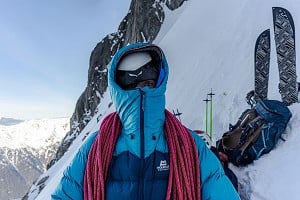
Whether worn on the outside as your main insulation, or as part of a layering system in colder weather, a lightweight down jacket is a really versatile piece of clothing. Belay in it; camp in it; climb or walk in it; go to the pub in it; stuff it into the pack just in case... We can't think of a season, or an activity, for which a lightweight, packable down warmth booster wouldn't be welcome.
However good modern synthetic fills have become, we all know that down still offers more warmth for its weight. But get it wet and it's useless. Here's where water resistant-treated down and weather proof outer fabrics both come into their own. Over summer 2018, autumn and early winter we've been putting 10 light down jackets from leading brands through their paces. Do they cut it in the changeable, but largely damp, UK climate?
Our review criteria:
Light down duvets (c.300-400g) offering packable warmth. This generation of thin down jackets are all about versatility; but are they a viable UK alternative to synthetics?
Down
Fill power: A higher fill power means that a given weight of down occupies more volume, and thus insulates more effectively. Unfortunately there are two different testing standards, which give non-equivalent values. EU-rated down is superior to US-rated down of the same quoted fill power, but it's not always clear which standard a brand is using. We've assumed parity in this review.
Water resistant-treated down is common nowadays, and we think that for UK use in particular it's well worth seeking out since it allows the down to maintain its loft (ie. go on working to insulate) for longer in damp conditions. We've considered the use of hydrophobic down a plus point in this review.
Duck or goose - they both work, so what's the difference? Well duck down is generally cheaper, but only goose down gets you higher fill powers. Below about 750fp the difference is academic, but in premium jackets with a higher quality fill you'd expect goose down.
The ethics of down production are an increasing concern for both brands and consumers. Many (but not all) manufacturers now use down certified by the Responsible Down Standard, which encourages a decent standard of animal welfare by prohibiting the worst practises of the industry, such as force feeding and live plucking, and by establishing an audit trail from the farm to the finished product. Where a brand has used more ethical down, we've noted it in the review.
Fabric
The outer fabric needs to be light to allow the fill to loft, but also reasonably durable. Crucially, it should be down-proof to ensure your expensive fill stays where it's supposed to. A DWR treatment will help the insulation stay dry for longer, and we've favoured more weather-proof fabrics in this review.
Most of the jackets in this group test have conventional stitched-through baffles. This is the easiest way to make a down duvet, especially a light one, but it has limitations. Every row of stitching is a strip through which wind can get in, heat can get out and the odd wisp of down might escape. The thinner your baffles, the more stitching there has to be, and the potentially less weatherproof your jacket becomes. Snazzy new 'woven' baffles mitigate some of these concerns, and should in theory make for a slightly warmer jacket for a given weight - but usually at a price.
Fit
The tailoring should allow space for layering the jacket over other things, but not so much that it's baggy since a closer fit will make it easier to put a shell on over the top, and will be more effective at keeping you warm. Is it long enough in the body to cover the midriff and keep your kidneys and buttocks warm? Is enough movement built into the cut to eliminate the danger of hem lift when the arms are raised? If you want a jacket that works for actually walking, climbing or skiing in and not just for standing around on a belay or at a camp, then the quality of the cut is important.
Overall summary
Rab Microlight Summit Jacket - £230
With a great long fit, quality high-lofting down, weatherproof fabric and up-to-date woven baffle construction, the Microlight Summit is a classy jacket. One or two features could be improved, and it's a comparatively heavy offering compared to some, but if you're after a lightweight-ish model that's specialised for serious mountain use then this one still takes some beating. Top marks to Rab!
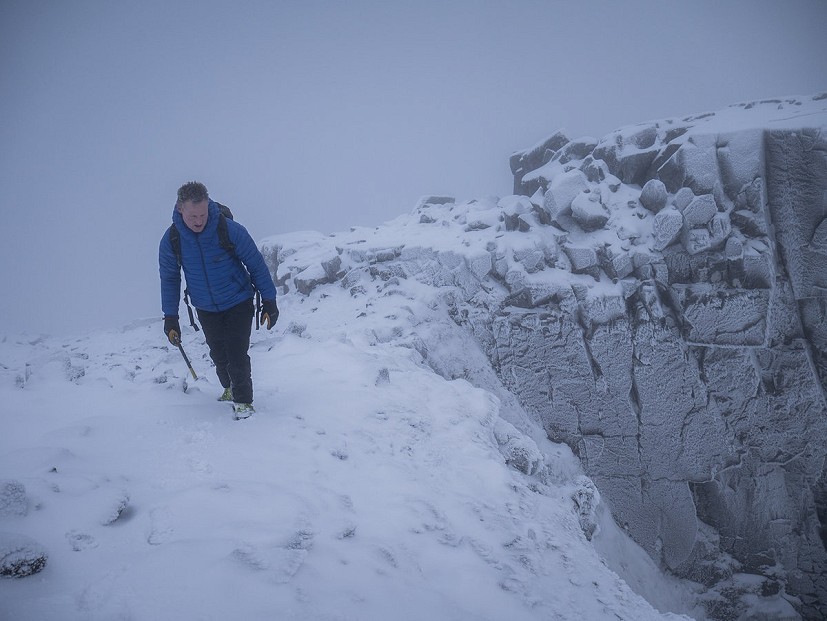
Fit
The Microlight Summit comes in both male and female versions.
Cut long in the body for maximum coverage, the hem length of the Microlight Summit is one of its best features. With a hem that sits below the waist, and drops further at the rear to offer almost full bum coverage, this jacket keeps the midriff warm, excludes any danger of drafts, and pairs well with a harness or rucksack hipbelt. There's room in the body to slip the jacket over other layers, but not loads of space; the fit is still trim and athletic, which is something to bear in mind if you're on the big side yourself. As such, the Microlight Summit can be worn either on top, or as more of a midlayer under a shell in really nasty weather.
Despite a fairly close fit in the underarms and at the elbow we've found that the arms can still be raised without danger of hem lift, a big advantage when climbing. The fact that the simple stretch cuff pulls snugly over a bulky gauntlet-style glove is a major plus point too. You can also roll the sleeves up over the forearms if you're wearing it on the move and need to cool down. These cuffs are great!
Weight
At 430g (size L) the Microlight Summit is towards the heavier end of this review, but we think this is a fair reflection of its long cut, fill weight and features. This one is warmer than most.
Fill
Rab have used 750 fill power European goose down, a high quality fill that offers plenty of loft. For a jacket with a lightweight-but-warm remit the quantity feels spot on too, at 143g in size L. This is more than most of the other jackets on test, a fact that plays to the Microlight Summit's favour for use on cold snowy mountains. The down is ethically sourced - Rab uses RDS-certified down from the European Union. As it has been given a fluorocarbon-free Nikwax hydrophobic treatment, we've found it maintains its loft more readily in damp weather than untreated down might have, and thus it stays warmer. This of course makes the jacket much more suitable for year-round use in the changeable British climate.
Fabric
To reduce seams and eliminate the need for traditional stitched baffles, the Microlight Summit uses Pertex's snazzy Quantum Infinity Weave fabric. Yes there are still stitched seams in the side panels and zips, but none in the baffles that hold the down themselves which, by a process we don't understand, have been made from just one single piece of fabric. This makes the jacket more windproof and warmer for its fill weight than a typical stitched-through construction. Tightly woven from very fine yarns, this Pertex fabric keeps down inside where it belongs. It's light enough to allow for plenty of loft, but still feels tough. We've found it very wind-resistant, while with its DWR treatment it effectively sheds water. You could probably wear this jacket in the rain - not that we've gone that far.
Hood
It's very much a helmet-friendly hood, with plenty of room to fit over a modern high-volume helmet without restricting head movement once the zip is done right up. Side volume adjusters help get a close fit around the face, and since the toggles are internal and the elastic tails hang down inside the collar, you get a neat and un-fiddly finish on the outside. Instead of an around-the-head cord adjuster Rab have stitched some stretch into the rear seams of the hood and this feature, in combination with a rear velcro tab, helps reduce the hood volume when you're not wearing a helmet. This works, but only up to a point, and it has to be said that the helmet-free fit around the sides and rear could still be tightened up. It's not a deal-breaker for non-climbers by any means, but perhaps with a few tweaks the system used here could be improved on? To help prevent the hood flapping around in the wind it's got a slightly stiffened peak, while inside this a stretchy forehead 'gaiter' keeps draughts at bay - a nice touch.
Features
Though they're not quite perfect the features on offer here are clearly aimed at climbing and mountain use. A double zipper on the robust YKK Vislon main zip lets you access a harness, so you can use the Microlight Summit as a light belay jacket. With the hem drawcord tightened we've noticed the bottom zipper can creep up a little, so a popper down here would have been a worthwhile addition. The zip is backed with a snag-free draught excluding strip, and this has a soft brushed chin guard. When you're not wearing the hood the collar comes nice and high to give full neck coverage.
The hand pockets are a generous size, but while they can still be used if you're wearing the jacket underneath a harness or rucksack hip belt, they are not fully accessible. Locating them an inch higher would have solved this silly niggle. For important things like a smartphone you get a single zipped chest pocket. Unfortunately the Microlight Summit does not stow into one of its own pockets, which for a jacket of this sort we think would be a really useful feature; you do get a stuff sack, and for packing in a rucksack or hanging off a harness the jacket squashes down into a reasonably compact bundle. Down at the hem it's an uncluttered feel, with adjustment toggles located on the inside and drawcord tails stowed neatly out of the way.
Rab say:
Worn as a warm midlayer or standalone outer for fast ascents in the likes of the Chamonix Valley, the Microlight Summit is a streamlined technical jacket for when weight is a concern but function is paramount.
Arc'teryx Cerium SL Hoody - £270
At 210g the Cerium SL easily boasts first place in the lightest entry awards. However, we all know that weight isn't everything, and lightness generally has a knock-on effect on durability - besides which, since it has much less fill than its rivals this jacket really isn't as warm. Features-wise the Cerium is - in that typically Arc'teryx way - streamlined, functional, and efficient. It's got a good, slim fit too, which is ideal for some; however, aside from the weight there's one other stat that will raise eyebrows - the price. Whilst it isn't the most expensive on test, at £270 it's certainly at the upper end of the price range, so expectations are understandably high, and you don't get a lot of down for your money.
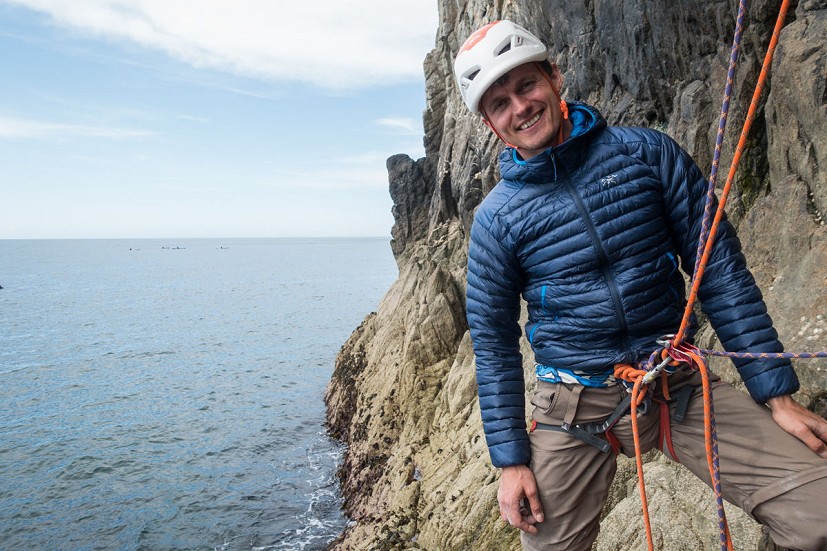
Fit
This jacket is available for both men and women. The Cerium is undoubtedly a slimline jacket, with a fitted cut that is designed as much to be a mid layer as an outer. Throughout the spring, summer, and autumn we mainly used it as a super light outer, which for the UK is probably what it's likely to be used for nine times out of ten. Were you to live in a cold/dry climate such as the Alps this may be a different story, but hey - we don't…
When it comes to cut Arc'teryx really have worked their magic, passing the basic 'lift test' with flying colours - i.e. raise your arms to climb and the hem simply doesn't lift. In this review, that's a rare accolade. Weight aside, this is what we liked most about it: it just fits. This makes climbing in it feel like a dream, simply because it's akin to wearing a warm, fitted fleece. That said, it does size accordingly and a Medium is definitely on the snug side of the spectrum.
The final notes on fit come from the adjustability around the hem and hood, which both have elastication to modify fit according to size, taste, and weather.
Weight
At 210g for a size Medium the Cerium SL is - by a fair margin - the lightest jacket on test, which is all the more impressive given that it hasn't cut corners when it comes to fit, often the first (major) fail of those seeking out the super-light. Were there to be a drawback of the weight it would undoubtedly come in the form of durability, but we'll cover that under fabric. The other thing to mention is that this jacket simply isn't as warm as most, since it has far less fill. Depending when and where you use it, that's not necessarily a bad thing, but it does limit the Cerium SL's winter ability and counts against it if you're after a year-round jacket for a bit of everything. In winter it's probably best viewed as a midlayer!
Fill
Premium 850 Fill Grey Goose Down is featured here; however, it was hard to find out exactly how much from the Arc'teryx website. With a bit of further investigation we found out why: there's only 56g of it. In defence of this somewhat miniscule quantity, there are also areas of Arc'teryx's synthetic Coreloft fill in areas of high moisture retention such as the cuffs, under arms, front of face, and shoulders.
With all the fill - both down and synthetic - factored in it delivers more warmth than you'd expect for a jacket with only 56g of down, but it's amazing what a bit of windproofing does to add warmth into the mix. It's still a very long way off from being the warmest on test though!
Fabric
Since we started using it back in spring we've definitely leaked our fair share of down, but equally we've repaired our fair share of leaks too. Obviously this has a cosmetic impact which some might not like, but the jacket keeps going…and also keeps getting more holes…
Hood
The hood is undoubtedly an 'under helmet' design, being similar to the general fit/feel of the jacket - snug, fitted, and without excess. Whilst it doesn't have a wired peak, it does have elastication running throughout, which alongside the toggle at the back allows a good level of customisation. It's worth mentioning that whilst tightening, it doesn't just pull around the top, or the rim - it pulls all around your head, giving an even spread. As such, there's a whole lot less air - and warmth - to escape.
Features
The Cerium SL features an integrated stuff sack inside the left pocket. Originally we were a little cynical as to why this wasn't removable, but it actually makes a whole lot of sense whilst using it, since it doesn't get lost!
Arc'teryx say:
Designed with a disciplined minimalism, the Cerium SL Hoody is exceptionally light and compressible. It primarily functions as a midlayer, but its efficient warmth and packability makes it an effective standalone for rest breaks, evenings at camp, or emergency bivvies. The 850 fill power goose down's warmth to weight ratio is outstanding, and the wind resistant Arato™ 7 nylon shell is ultra lightweight and resists tearing. An insulated StormHood™ adds warmth.
Berghaus Ramche Reflect Micro Down Jacket - £300
A long-and-including-technical-words-name, but this actually reflects the interesting technology that has gone into this impressive lightweight duvet. Body mapping; "Hydro down"; "Reflect Technology"; lightweight material and design; and even the promise that everyone's favourite former taxman and extreme alpinist Mick Fowler was at some point involved in the design; the blurb promises a lot. What you actually get is a lot of warmth for very little weight. The price is extreme, but you're arguably getting a lot for the money, and the jacket is now widely available at a discount.
Fit
The Ramche Reflect Micro Down Jacket seems only to come in men's sizes. Berghaus make technical down jackets for women too, but they are not directly equivalent.
Our reviewer requested a medium but was provided with a large for this review. Unsurprisingly, the large gives good coverage and pulls on well over a shell or softshell when being used as a belay jacket or for lunch stops and the like. Having a dropped hem at the back, it covers your bum well. Nevertheless the fit one size bigger than normal isn't bad on our reviewer and only feels a bit baggy if being worn over just a baselayer or t-shirt, so it seems fair to say that the Ramche has quite a slim fit and if you think you might be using it mainly in belay jacket style, possibly going one size up from normal is worth considering. A close fit makes sense for a "body mapped" item, meaning different amounts of insulation are used in areas that need more or less of it.
With the elastic snugged up around the bum there is no hem lift at all when the arms are raised, and no pull around the armpits. Even with the elastic not done up at all there is minimal hem lift. That might be the Fowler influence - they must have designed the Ramche very much with climbers in mind.
Weight
342g (size large) for a technical, fully featured hooded jacket is impressively light.
Fill
Somewhat annoyingly Berghaus do not say what down they are using on the Ramche's product page beyond that it is Nikwax-treated "Hydrodown". However with a bit of digging we've established that it's an 850 fill power goose down with 90% down content versus 10% feather. This suggests one of the highest quality fills on test. There's 100g of down in a medium jacket - a bit less than many of the jackets on test, though the fill power makes up for that.
In use the down is definitely very compressible, lofts really well, and has plenty of warmth for very little weight. Berghaus do say that their Hydrodown "keeps you warmer for longer by repelling water for up to 16 hours so it can carry on working even when wet", although we aren't really clear on where that figure comes from! Our reviewer noted that he has managed to get the jacket quite damp to the touch at times (over a wet shell on cold, damp drizzly and even snowy days, or for warmth when stopping after a steep, sweaty walk uphill) and the insulation does not seem bothered even if the inner or outer material feels wet. Once a bit wet, the jacket does seem to dry very quickly when inside or chucked on the back seat on the drive home. Importantly, the down used is certified as cruelty-free by the Responsible Down Standard organization.
Fabric
Again Berghaus's customer-facing product page for the Ramche doesn't have anything to say on the shell material; the label just says the inner and outer is a 100% polymide. After a bit of digging we can tell you that it's a 7 denier polyamide ripstop. Berghaus tell us it's twice as strong as the nearest competition, though we don't know what they're comparing with. This stuff is certainly very light and silky, and it doesn't seem to be particularly delicate although being careful around thorns and sticks is always sensible with down jackets! The shell seems to have some kind of DWR, as water droplets bead up on it. Nevertheless the material has felt quite damp in use, either from sweat and wet gear underneath or from sleet and mist from outside. Our reviewer couldn't really decide whether that damp feeling was due to the material successfully keeping a lot of moisture out of the insulation, or rather because it isn't particularly water resistant and the jacket was getting damp reasonably quickly in adverse conditions.
Hood
The hood is helmet-compatible, and this makes the Ramche Micro a great light belay jacket – Mr Fowler's influence perhaps. But even without a helmet a simple drawcord arrangement cinches down the hood and it still works well. It has a minimalist stiffened peak and an elasticated 'gasket' across your forehead (the elasticated drawcord goes around the back of your head) which work really well in poor weather for helping the hood hold its shape in the wind and keeping out the draughts.
Features
Two mesh-backed handwarmer pockets and one internal security pocket, a hem draw cord and elasticated cuffs are about it for features – sort of as much as you can reasonably expect on a hooded jacket this light. The zip is one-way, which our reviewer likes but others hate. One invisible feature that is worthy of note is the "Reflect technology". According to Berghaus this is a "fine, breathable internal reflective mesh fabric [which] reflects your own body heat back in adding 10% extra warmth without the weight", although in Berghaus ads we've seen for other models of jacket with the Reflect technology they are claiming 20%. The jacket is very warm for its minimal weight, but how much that is down to reflecting radiated heat back at you is very hard to say in real-world conditions.
None of the pockets are pack pockets and the jacket did not come with a stuff-sack. Our reviewer bought a cheap dry-bag to keep the Ramche in and to carry it on his harness when using it as a belay jacket.
Berghaus say:
The toughest climbs demand insulation that delivers superior warmth without the weight. The super-light fabric unique to Berghaus offers incredible insulation and is twice as strong as the nearest competition. Ground-breaking internal Reflect technology increases your warmth by 10% as the fine mesh reflects body heat back into your core creating unrivalled efficiency. The body-mapped design distributes heat where you need it most and reduces bulk in critical areas, while our Hydrodown® treated with Nikwax® keeps you warmer for longer by repelling water for up to 16 hours so it can carry on working even when wet.
Mountain Equipment Arete Hooded Jacket - £170
It's lightweight and versatile for year-round use, but perhaps best in spring and autumn. Other models are warmer, and boast higher quality fill or more mountain-oriented features; however you'll pay for these extras. We don't feel the Arete is anything special, though it certainly does the job at a reasonable budget. Don't think of it primarily as a techy climbing piece; it's more of an outdoor all-rounder, and something you might be happy to wear about town as well as in the hills.
Fit
Mountain Equipment make the Arete Hooded Jacket for both men and women. Other designs are longer but this jacket still gives sufficient midriff draught protection, coming below the waist at the front and dropping further in the rear to at least partially cover the bum. There's space inside to wear the Arete over a couple of lighter layers, such as a baselayer and midweight fleece; on the other hand it's still a low-bulk jacket which fits comfortably under a shell. As such you could use the Arete as your main jacket in more temperate conditions, or as a beefy midlayer on a snowy mountain day. The cut is relatively tight in the arms, particularly the armpits, and as a result our reviewer gets a lot of hem lift when the arms are raised. This jacket instantly slips out from under a harness, so we wouldn't recommend it for actually climbing in. Elastane-bound cuffs make for a simple feel at the wrist; these can be pulled over the forearm to help you cool off in a hurry, and coaxed over bulky gauntlet-style gloves.
Weight
At 365g (size L) the Arete meets the lightweight brief well; it's light enough to wear as a cold weather midlayer without feeling over-dressed, for instance, and compresses into a nice neat size for packing or carrying on a harness.
Fill
With 116g (size L) of 700 fill power duck down, Mountain Equipment have given the Arete a mid-range quality and amount of insulation, which reflects its role as a light all-season jacket. They have also tweaked the distribution of the fill to maximise warmth where it's most needed. The warmth on offer here is well judged for use on cool summer nights, spring cragging or autumn hills; however this jacket is less warm than some and in winter you'll be more likely to use it as part of your layering system than as a stand-alone outer.
Duck down isn't available at the higher fill power of a premium goose down, and this reflects the Arete's mid-market positioning. There is a little more fill, and/or of a higher quality, in some of the more expensive jackets in this review. The loft is OK, but there's no denying that the Arete feels a bit limp and flat compared to heavier alternatives such as the Rab Micolight Summit.
On the plus side that down has been given a durably water-repellent Bluesign-approved Teflon treatment, which helps it maintain loft for longer in damp conditions and makes the Arete a good choice for mixed UK weather or snowy Alpine trips. In terms of ethics, ME use Down Codex-approved fill, with high standards of animal welfare and an audited supply chain.
Fabric
To help keep weight down the Arete has a light 20 denier 'Helium' fabric. This is densely woven to make it more down proof, although we have noticed the odd escapee through the stitching. It's highly wind-resistant, which does help on a breezy summit, and though it's very thin the fabric still feels pretty tough for its weight (though as with all light down jackets you'll still want to treat it nicely). We're not sure this fabric is as shower-resistant as some, but in use it does seem pretty breathable, which helps make the Arete a jacket you can comfortably wear on the go.
In common with most of the jackets on review here the Arete is made with conventional stitched-through micro baffles. While these seem wide enough to allow the down fill to loft at its best, there's no denying the limitations of the stitched-through design.
Hood
Simplicity is the name of the game here, and this has positives and negatives. There isn't space to fit over a helmet (not if you want to do up the zip or move your head), but this soft, low-profile hood works reasonably well under a helmet instead. It's not that comfy under the chin when worn like this, but head movement is more or less unrestricted. However without a helmet to hold it in place the hood fits poorly. An elastane-bound rim is your only concession to volume adjustment - there are no drawcords or velcro tabs - so there's no way to get a draught-free close fit around the face. Neither does it move well with your head. Lacking a structured brim, the hood flaps and catches any wind going; it also tends to flop down to obscure the top of your field of vision. For actively climbing in it, particularly if it's windy, this hood would be annoying. But if you're just hanging out at a chilly campsite it's OK. Setting aside these criticisms, at least this hood is light, and you won't be having to faff with drawcords.
Features
Only two zipped hand pockets are provided. While these are a reasonable size for a hat or thin gloves, their position low on the body makes them unusable under a harness or rucksack belt. This mistake could easily have been avoided, which is odd. Then again, how often do you actually wear a down jacket when walking with a pack on? A third higher pocket would have been good, since that's really the place to carry your phone. On the plus side the jacket stuffs into one of its pockets, giving you a neat and compact bundle to hang from a harness in case it's chilly on the belay.
At the waist you get Mountain Equipment's now-trademark dual tether drawcords; these hang as separate tails rather than a loop, so you can't clip or snag them by mistake. It's a small criticism, but slightly annoying that as you walk and swing your arms, the untethered ends of cord whack you on the hand with every step - they could have been channelled up inside the jacket.
The chunky YKK Vislon main zip feels suitably tough, is easy to use with gloves, and is backed with an insulated baffle (which has a chin guard at the top). Unfortunately, if you want to use the Arete as a light belay jacket on a cool crag day, the lack of a double zipper makes it hard to access your harness.
Mountain Equipment say:
An ultralight narrow baffled duvet offering alpinists and rock climbers valuable extra warmth with a tiny pack size. Super lightweight insulation for when every gram counts. With a protective hood this minimalist jacket uses a durable water resistant down fill to give a boost of warmth for pre-dawn starts and extended belays.
Montane Featherlite Down Jacket - £190
The Featherlite is an excellent midweight down jacket for all-round use, with more fill than most in this review. It's towards the top of the weight scale but does feel warm for the weight, making it a particularly good choice for winter use. The hood is large and will easily go over a helmet without restricting movement. Spacious chest and hand warming pockets also make it a perfect jacket for long winter hill days when you may want to be storing gloves, maps and food in your pockets. The cut is fine for walking and general use, but is maybe not the best for climbing.
Fit
The Featherlite comes in both male and female versions.
Its tailoring is close and athletic, but with enough room to fit over a couple of other garments, so the Featherlite could be worn either as an outer layer on a medium-cold day or as part of a layering system when the weather's really perishing. The jacket is medium in length, sitting around the waist to the front and sides and slightly lower at the rear to offer only partial bum coverage. The snug athletic fit keeps the jacket close to the body of the wearer and helps prevent drafts coming up from the waist; however a longer cut in the body would have provided better midriff insulation.
The cut around the arms is roomy, especially in the upper arm area, which is good if you're thinking about using this as a top layer. We've found the cut of the underarm means lifting the arm above the head gives quite a bit of hem lift, and this soon exposes the lower body to the elements. For climbing this might be a problem since the hem could easily lift out from under a harness if the user has it tucked. We think the cut suits less active uses; if you're hanging around at a camp, standing on a chilly belay or just out for a country walk then it's fine, but for us the tailoring could have been better and it's really only this that costs this otherwise-excellent jacket a 'Highly Recommended'. The wrist cuff is stretchy and will grip tightly to the wrist without letting any cold air in.
Weight
At a hefty (in terms of this test) 424g (size M), the Featherlite is one of the heavier jackets we've looked at here. As stated, this jacket can be used either as a midlayer or an outer layer, although we have tended to favour it for the latter as it's warm enough to function on its own in all but real sub-zero weather.
Fill
For the Featherlite, Montane have opted for a generous 140g (size M) of 750+ fill power down with a 90/10 down/feather mix - a lot of decent-quality down to offer a good level of warmth for the weight of jacket, without costing an arm and a leg. This is Allied Feather & Down's HyperDRY water resistant down. Although the jacket still wets through when you're out in rain, a fact that we unfortunately got to test on two occasions, it does readily reloft once dried, without clumping. This water resistant treatment helps make the jacket well suited to damp UK use, while the fill weight and quality together make this one of the warmer jackets of the 10 we reviewed.
Commendably, Montane use ethically sourced down throughout their down range, and claim to be the first brand in the world to commit to the Responsible Down Standard across their entire catalogue.
Fabric
For the outer material Montane have used a light-but-strong Pertex Quantum Rip-stop.With a decent DWR, this material is water repellent, which will keep you dry in drizzle or a short shower, but after about half an hour of rain we've found it will begin to wet through. Given that in the old days down plus rain was a definite no-no, we think that's pretty respectable! This fabric is also pretty windproof, helping keep all that down-trapped warm air inside the jacket in a breeze. The jacket uses horizontal micro baffles to evenly distribute down and aid in lofting, and these run across the entirety of the jacket in virtually the same size and orientation. Like the majority of jackets in this review it's a stitched-through construction, which has obvious drawbacks.
Hood
The hood on the Featherlite is pretty roomy. It's easily capable of being worn over a helmet without restricting movement of the head or covering the face too much. For adjusting the hood Montane have added an external rear drawcord to reduce the width of the hood, while on the inside of the collar a single elastic drawcord on each side helps bring the hood snugly down to the correct volume and fit. Around the outside of the hood is a generous reinforced peak that helps take water away from the face in wet conditions and provides structure in the wind. The hood can be packaged away by rolling and attaching an internal elastic strap to a small hook on the rear hood drawcord, although this does seem to come unattached with ease, causing the hood to unravel - a case of a nice idea that doesn't quite come off. The rest of the hood is great.
Features
The jacket has two zipped hand warmer pockets that are just about deep enough to store a folded OS map in - which is better than you'll get with many such jackets. On the chest is another sizable zipped pocket, an ideal size for something like a phone or some bars for the hill, while there's a fourth pocket inside. All in all, this is a great jacket if you like to carry a lot of things on your person, such as gloves, instead of in your rucksack.
The Featherlite doesn't stuff into its own pocket, but it does come with a small stuff sack that allows it to be packed down to a compact size.
Montane say:
Exceptionally light, the Featherlite Down Jacket is highly versatile for year round mountain activities. Wear as a mid-layer when moving quickly in really cold conditions or as outer insulation on cool evening camps. Packing down to the size of a large orange, it will hardly be noticed when stowed in your backpack, whilst the PERTEX® Quantum outer fabric allows the down to loft to its capacity on demand.
Marmot Quasar Nova Hoody - £290
The Quasar Nova Hoody is a lightweight jacket that works well as a standalone piece in dry, cold weather, or underneath a shell if it's particularly wet. The jacket is one of the lighter in the review, which is impressive particularly as they've not cut down on the sizing. The woven baffle construction and the 800-fill power goose down make this piece particularly warm for its weight, and help to create a nice slimline jacket; cost aside, the main downside is the tailoring.
Fit
The cut of this jacket is slightly shorter than others in the review, but with a lot of room in the midriff (as seen in the photographs). For active use, one big issue with the jacket is that it can readily ride up above the waist when lifting your arms. The design has left room in the midriff and features drawcords on the hem to try to counter this, but ultimately it would have been nice if the cut was slightly longer, particularly for use when climbing. For standing around at a camp, for wearing on a chilly belay, or just for casual walking use, the cut is fine.
The cuffs are a basic elastic design that could be slightly longer, although it isn't a huge issue. They are also quite tight, and not big enough to fit over ski gauntlets. There's a lot of space in the upper arms which we can't help but feel would be better used in making the sleeves longer. The fit around the neck can feel a bit restrictive when turning your head.
There is a women's version available.
Weight
At 320g in a medium the jacket feels light, particularly for a technical jacket with a hood; however it's still quite lofty and warm for its weight.
Fill
The insulation is 800 fill power goose down, which is towards the higher end of the review. You get 83g of fill in a men's Medium, which is less than some, but because of the quality it's noticeable that this jacket is very warm for its weight. The down is sourced from Eastern Europe and Asia, all a bi-product of the food industry, and is RDS certified.
Marmot's goose down isn't hydrophobic, which we'd consider a big drawback for year-round UK use. But to an extent this is offset by nylon fabric which is reasonably water resistant. Their 600 and 700 fill power duck down jackets are hydrophobic, so it's a shame that the Quasar Nova isn't.
Fabric
The fabric is 20 denier nylon, good and tough, and the Quasar Nova is also one of the few jackets we've looked at to feature a woven baffle construction. What this means is that stitching has been eliminated from the equation, so less wind can get in and less heat can escape. This is particularly useful when you're looking to go fast and light in cold or windy conditions. It was taken out onto the Aiguille Marbrées in September and was useful to put on when up high and slightly more exposed to the elements, working well in that situation without the need for an additional shell to keep the wind off.
For such a lightweight down jacket, we've been impressed by the durability of the face fabric. It's been shoved in a bag with a rack and crampons, gone through gullies and offwidths, and so far there are no tears or even signs of scuffing. The fabric works well in windy conditions and it is quite water resistant (aided by the lack of stitching), although this does come up short around the cuffs and sleeves.
Hood
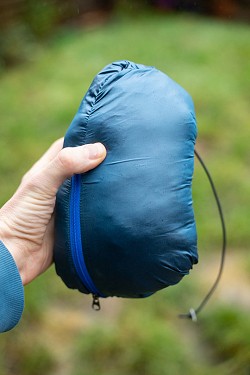
Despite not being adjustable, the hood fits well around the head, albeit pretty snugly when worn over a helmet. When the zip is fully done up and the hood is worn with a helmet, there is a fair amount of restriction when looking from side to side. This hood is better when worn without a helmet, and its lack of adjustability suggests it was designed to fit a helmet-less head. For this reason, if no other, the Quasar Nova wouldn't be our first choice for alpine or winter climbing.
Features
The Quasar Nova has a zippered chest pocket and two zippered hand pockets on the outside of the jacket, although features nothing on the inside. Marmot have gone decidedly minimalist with this piece and have cut down on everything but the essentials. For carryimg it as a belay jacket, it can pack into its own pocket and the drawcord is long enough to tie to a harness, or clip to a krab.
Marmot say:
In the Quasar Nova Hoody's 800-fill-power goose down, there's not a cold spot in sight thanks in part to its smartly woven baffle fabric. Weaving two fabric layers together into a baffled construction eliminates stitching, which alleviates cold spots by holding the down in its proper place and makes this jacket, sans threads, a more durable garment. The result is a lightweight, durable alpine ready jacket that delivers a tangible dose of warmth for cold and callous bivvies.
Outdoor Research Transcendant Down Hoody - £180
The Transcendant Down Hoody may not have the best warmth for weight, or a particularly techy feel for mountain use, but it's a great companion at the crag in Autumn and Spring whilst being stylish enough to wear around town too. With plenty of features, it's also suitable for more wintry walking adventures, although you might be looking for something bulkier, or with a higher quality fill, to keep you warm and dry on a Scottish winter or alpine belay.
Fit
The cut of the Transcendant Hoody is fairly regular: it's neither particularly long nor short in the body, coming halfway down your bum, which is great for everyday use as it keeps the wind off without being restrictive. Whilst this might not offer the same protection as the long cut of something like the Rab Microlight Summit it does mean that the Transcendant Hoody is stylish enough to be worn around town without giving away your identity as an outdoors-person.
The Transcendant is snug on the arms, which provides lots of warmth but does mean you can't roll your sleeves up. With well cut elasticated cuffs it keeps your wrists warm and prevents any drafts without restricting hand movement. In the body there is enough room for you to remain comfortable whilst being active, and you can easily wear a fleece or another jacket underneath if required. This is great as whilst the Transcendant is the heavyweight of this review it can still readily be layered with other clothing for those colder days. Although it is pretty bulky you could fit a large hardshell over the top for protection from the rain.
Weight
The Transcendant comes out at 433g in a size medium. Whilst that makes it the heaviest of the models on test it is still fairly light for its size, and its overall warmth probably justifies the weight. Still, if you're in an alpine or Scottish winter type situation in which if every gram counts, then its relatively high weight is another count against the Transcendant (along with fill and features).
Fill
In size Medium the Transcendant features 117g of 650 fill-power Responsible Down Standard goose down (an 80:20 fill of down:feathers). In terms of quality down this is towards the bottom end of the review, so while it's a perfectly standard fill for the price, you're going to get better warmth-for-weight elsewhere. That said there's plenty of fill here so we've still found that it keeps you nice and warm for chilly belays at the crag and for walking in cold weather. But if you're looking for something that offers more packable warmth for snowy mountains then you're going to want a jacket with higher quality fill. To be fair to the Transcendant Hoody it's clearly a bit of a generalist, with an all-round outdoor/lifestyle kind of vibe, so its comparatively low performance is perfectly understandable! The down is not hydrophobic, and the outer fabric is not particularly water resistant either, which is a double disadvantage that's worth bearing in mind if you're out in winter conditions or even on rainy days. Some water resistance would be very welcome in the UK climate.
Fabric
The 100% polyester 20 denier outer fabric is light enough, and seems very durable for how thin it is, but bear in mind that this is only relative - all down clothing needs careful treatment. We have also found that our sample regularly loses the odd feather from one of the seams. In addition, the Transcendant Hoody is by no means water resistant, and the outer absorbs rain fairly quickly. However it does provide good protection from the wind. These considerations mean that the Transcendant Hoody is best suited to chilly, dry days or wearing around town unless it is worn with other layers for more wintry or wet activities.
The fabric is an attractive muted colour, which some of us felt was particularly nice compared to some of the shiny 'bin bag' down jackets you sometimes see. But, if the state of our reviewer is anything to go by, it does seem to take on dirt/stains quite easily. Unusually in this review, the Transcendant bucks the current trend for very narrow baffles; its stitched-through baffles are rather wider than the other jackets on test, and while that style might look more appropriate to a heavier-weight jacket with more fill inside, OR say that the wide baffles allow the down to loft to the max. The implied criticism of the narrow design may be unproven (at least in our experience in this review) but there's no denying that the Transcendant's down lofts nicely, so maybe OR are onto something? We think the wider baffles also look good in a retro sort of way.
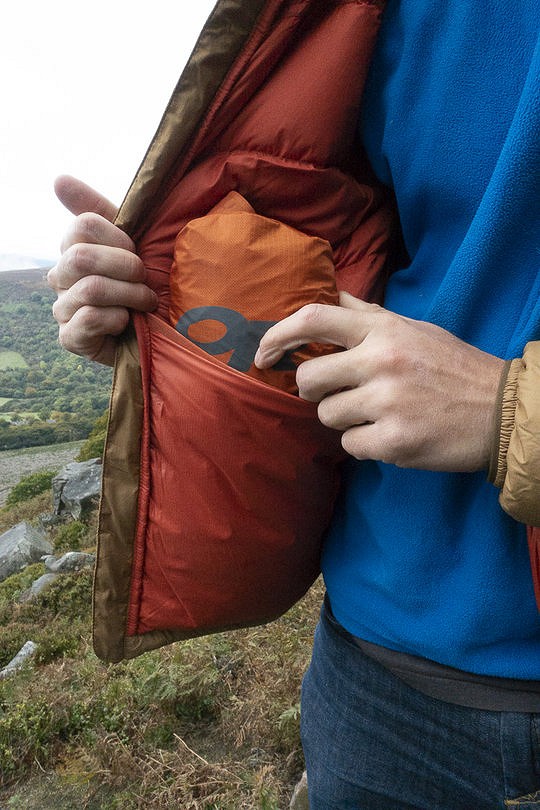
Hood
The hood feels lovely: it's quite beefy and provides good coverage over your face, while the fleecy section on the chin is particularly nice - it feels really plush. It is also helmet compatible and has two cinches at the collar and one of the back of the head, so it can be more than adequately tightened when you're not wearing a helmet.
Features
The myriad features of the Transcendant Hoody are among its best features (pun intended). It's got two big internal glove pockets (in which our reviewer has been keeping his Outdoor Research Helium II jacket in incase of downpours), a nice big zipped chest pocket with a smaller elasticated pocket inside for keys etc., zippable, lovely large fleece lined pockets which, when the Transcendant packs in to its left pocket, mean that you've got a nice fleecy pillow for camping and what's more all the zips are oversized which makes them much easier to use with gloves. For a jacket of its size its packs up pretty small, about the size of a bag of flour, and features a carabiner loop. All of these features are well-thought-out and none of them feel unnecessarily tacked-on. The small additions like the fleece in the pockets and at the chin make the jacket feel quality, and the big internal and external pockets make it a great option for carrying around gloves, hats, bars and even give a handy space for storing your climbing shoes when it's really cold outside.
OR say:
Injected with all-natural responsibly sourced down, the new Transcendent uses wider quilting and a rebalanced down fill to allow its insulation to loft better for fast, compressible warmth. Fresh, modern design lines and colors, trusted lightweight weather resistance, and feature-packed details add even more reasons for adventurers to rely on the Transcendent to excel in their sport.
For more info see outdoorresearch.com
Alpkit Filoment - £145
Low cost down-delivery system! For people wanting a down jacket which can be used in a variety of conditions, without paying the earth for it, the Filoment is a strong contender. At this price you can't expect the refinement of products with branded fabrics and treatments, but for most people most of the time this will deliver many of the same benefits for less outlay. You might even find it on sale for less than the headline price.
Fit
The Filoment comes in both male and female versions.
First impressions were that the cut of this jacket was not athletic and snug; there seemed to be more bulk around the midriff than there needed to be, and yet we were pretty sure a smaller size would be out of the question on our reviewer since it was comparatively tight elsewhere. We're still not 100% convinced by the cut, but it has grown on us a bit - or maybe the comparative 'rigidity' of the baffles has since softened. There is a dropped hem at the back, but it is not designed to be a total bum coverer. The hem is long enough to fit under a harness, but the cut isn't hugely active, so it soon pulls out when you start climbing. For this reason we wouldn't pick the Filoment first for a winter climbing day.
The overall low volume of this jacket means it can be used as a midlayer and fits easily under a shell. If you do put a shell over the top the arms may begin to feel a bit bulked-out however. Like many other generalist lightweight jackets the Filoment is not really in 'belay jacket' territory. It works as a midlayer or as an outer, but it doesn't have the space (in the underarms for instance) to pull easily over the top of a full winter get-up in order to function as a belay refuge.
Weight
The size medium jacket we tested is a fairly minimalist 335g, well within the lightweight ballpark we were aiming at in this group test.
Fill
Alkit use 650 fill power duck down, which is lower than most of the other jackets in the group test; this measurement means the same weight of this down fills slightly less space - in other words it provides less loft and is thus less warm for a given weight of fill. However, logically this disadvantage should be a bit less noticeable among lightweight/low fill jackets than it would be in more insulated products with higher fill volumes which are designed for serious cold. Nevertheless, compared to many of its pricier rivals in this review the warmth for weight is not as good with the Filoment. On the other hand you get 132g of fill in a size M jacket, which is more than most on test, and this helps to boost the Filoment's comparative warmth for winter and mountain use.
The down is ethically sourced and RDS-certified, and it is hydrophobic, being treated with Alpkit's 'Downtek' treatment. Along with the DWR this allows a degree of insurance against damp affecting the insulation. On the ethical front, Alpkit only use RDS-certfied down, which may come as a pleasant surprise in a relatively budget offering.
The density of the fill seems even on all parts of the jacket. As a consequence the hood and torso feel compact in nature but proportionally the forearms feel somewhat 'overfilled'.
Fabric
Alpkit's use of generic fabrics may be one way they help keep cost down. This 20 denier ripstop nylon feels easily tough enough for general use and abuse. The fabric is DWR treated, and in light rain this seems to be effective. We have found there is definitely enough protection to cope with a bit of unexpected drizzle if MWIS get it wrong - a quick shake of the jacket and the droplets ping off. However in more prolonged damp, the surface of the fabric does seem to wet out quite readily. When worn under a shell on the descent from the top of a route in Coire an t-Sneachda, for instance, large areas of fabric were visibly wetted-out by the time we'd gone down the Goat Track to the floor of the corrie.
Like most jackets of this type, there is lots of stitching defining the many mini-baffles which are the hallmark of today's standard lightweight jackets. All that stitching means lots of potential cold spots, places for wind to get in and stray wisps of down to slip out.
Of course the Filoment can be used as an outer but it's probably best suited to more benign cold conditions rather than wind and precipitation. However if you're happy putting a shell over the top at the first sign of trouble then this coat is actually widely applicable for a range of conditions.
Hood
The hood has a volume adjuster on the back with a pretty chunky toggle, suggesting it would be more comfortable over the outside of a helmet. However there is none of the other architecture you expect on a helmet-friendly hood. The hood is really a bit too small to go over a helmet; it can just about be pulled over if the zip is left undone. You can wear this under a helmet but the toggle is then a bit in the way. In summary if you are wearing a helmet and the hood needs to be up, then there is no perfect solution here - a point against the Filoment as a climbing jacket. While there is no other adjustment of the hood, around the face there is elastic. When zipped up the neck comes up high and gives a snug, draught-proof fit.
Features
With three zipped pockets, the jacket is a fairly simple design. One really useful feature are the two internal 'dump' pockets; these are particularly useful for temporarily holding your gloves as they are quite big and avoid the need to fart about with zips.
It's not supplied with a stuff sack and there's no logical pocket in which to fold it, however it does fit nicely into an Alpkit waterproof bag we happened to have.
Alpkit say:
Filoment was designed to keep you warm when you're moving fast and light. Incredibly packable, light and slim-fitting, we've worn ours as top layers spring evenings around camp, cosy mid layers for those Alpine starts, and even as part of our sleep systems on ambitiously minimalist mountain marathons.
Sprayway Mylas - £160
The Mylas is probably the least technical offering in this test, being geared more towards walkers than climbers, scramblers, or mountaineers. Its unusual fit is short in the arms and roomy across the front, and this won't be to everyone's taste. The fill quantity and quality hits a good middle ground, but price-wise the Mylas maybe feels a little above what you might expect for a jacket of this spec.
Fit
When first putting on the Mylas it was pretty apparent that the sizing scale and cut used at Sprayway is different to many others on test. It's broad across the shoulders, tight across the back, and huge across the front - so large it's potentially worth going down a size if you're after something a little more fitted. That said, due to the other factors, and the fact the arms are quite short, it's a tricky one to recommend without trying on.
When it comes to cut it's made with walking in mind, not climbing or scrambling, as there's a whole lot of hem lift when moving your arms above your head. This puts it at the less technical end of the spectrum, more for casual recreational use, summit stops on hillwalking days and general hanging out than for anything technical.
The female equivalent is the Lark.
Weight
Perhaps unsurprisingly the Mylas isn't the lightest jacket out there, but at 400g (size Medium) neither is it - quite - the heaviest in this test. That said, being comparatively heavy and having a large weight of fill too, the Mylas doesn't score that well in terms of the warmth on offer for its weight. Thanks to their closer cut, stitch-free construction and higher quality fill, some of the lighter jackets in this review feel significantly warmer.
Fill
With 140g of 700+ fill power duck down it's at the upper end of fill weight for the category, but around the mid-to-lower end of the quality spectrum. You do get plenty of fill for the price though. The down itself has been given a hydrophobic Teflon treatment, which should give the jacket greater resistance to moisture than your average non-treated down - something we've appreciated in the Mylas on dank autumnal days. Warmth-wise it sits somewhere in the middle ground due to the combination of the reasonable 700-fill down used (as opposed to higher quality 750 or 800), coupled with the quantity within, which is higher than most. But when you factor in the somewhat roomy fit, it isn't the most efficient out there when it comes to heat retention.
Fabric
The Mylas features Sprayway's own 'TechShell' outer, which is both downproof and windproof, with a ripstop stitch pattern. It has a DWR treatment, which complements the water-resistant-treated down to make the jacket a decent choice when the weather's a bit damp. Weight-wise we haven't managed to find out the exact denier, but much like the rest of the jacket it sits somewhere in the middle ground and is perfectly suitable for the non-technical lightweight-ish jacket that it is.
Hood
The hood is arguably one of the Mylas' best features, being both snug and fitted, with good coverage. That said, it doesn't have any volume adjustment, so if for some reason it doesn't fit there's no way of changing it. You won't be fitting this one over a climbing helmet.
Features
One particular feature we like is the size of the two zipped hand pockets, which are particularly deep - great for when you've got cold hands, or for carrying bulky gloves, a map etc. There's another internal/zipped pocket for valuables too. It is also supplied with a stuff sack.
Sprayway say:
A lightweight hooded jacket with water resistant down, perfect for cold days.
For more info see sprayway.com
Salewa Ortles Light 2 Down Hooded Jacket - £225
The Ortles (for short) is a good lightweight minimalist down jacket that is ideal as extra insulation at the bottom of your rucksack, worn as a midlayer on extra cold days or as an outer layer on days where you're moving reasonably quickly. It's got a great pack size and can be squashed down into the integrated stuff sack that is located in the hand warming pocket. The cut is generally good and overall movement is unimpaired. Its one real let down is the hood, which offers very little protection and doesn't cover much of the forehead.
Fit
The fit on the Ortles is slim and tapers significantly down to the waist - what many would describe as an "athletic cut". The rear does not drop particularly low, so you don't have as much coverage over the bum. As a result this doesn't give the same level of protection that many of the other jackets do in this test, however it does fit well as an outer layer on less windy or cold days. Due to this cut you also have the option of using the Ortles as a midlayer jacket, something that you could easily pop under a shell for an extra layer of warmth.
The upper and under arms are cut with more room than the rest of the jacket, allowing for overhead movement with little or no hem lift - good for climbing, scrambling and skiing. Around the cuffs elastic bindings help keep the jacket snug, and these fit over a ski glove to keep the draught off your wrists.
Weight
At 355g size Large, this jacket is about mid range in this review. The warmth on offer is about mid-range too; heavier jackets with more fill may be marginally warmer, and so too might the jackets with a higher fill power down - but there's not really that much between them, and the Ortles certainly does the job as a lightweight jacket for year-round mountain use.
Fill
Salewa have filled the Ortles with 90/10 duck down with a fill power of 750 but, unusually in this review, this has been combined with strategically placed Polartec Alpha synthetic insulation. It's hard to tell where this is by feel, but Salewa tell us it's on the shoulders and hood - places that get a bit of wear and tear, and compression under pack straps etc. However, at the time of going to print we haven't been able to establish how much down is contained in the Ortles - and compared to some the amount of fill does feel on the skimpy side.
In the terms of this test the down in the Ortles is upper-mid-range for quality, but it's worth mentioning that the duck down used here is going to be slightly less high lofting than the higher fill power goose down commonly used in premium jackets. Put simply, it will offer less warmth for a given weight. In addition it is not hydrophobic-treated, which is a disadvantage for use in above-freezing conditions. However in our experience it has still performed well on windy summits and has continued to loft well (once dried out) after two good soakings.
The horizontal baffles seem effective at evenly distributing down and under a light we cannot see any areas where down has clumped or insulation isn't reaching. The underarms are not stuffed as much as the rest of the jacket, presumably because it's a point where people often sweat, and when the arms are down your armpits arguably don't need much insulation anyway.
Like many other brands Salewa only use Responsible Down Standard certified down.
Fabric
The outer material on the Ortles is a 15 denier nylon ripstop fabric that is wind-resistant and water-repellent. The shoulders/hood and arms appear to have a marginally tougher finish on them, perhaps as those areas are going to take more wear and tear - especially around the forearms while climbing.
As for the performance of the material, although we haven't yet had it out in a gale, the wind resistance does seem to work well, and like you'd expect, the water repellency holds up for a short time before wetting through.
The inner fabric is a nylon downproof lining that is 20 denier, with the exception of around the underarms where there is a small patch of mesh material (only on the inside) for venting moisture - a nice touch.
Hood
This is an under helmet style hood, and quite a tight one at that. When pulled up, the front of the hood still sits quite high and far back on the user's forehead and there is no peak or size adjustment at the rim, so it's not providing the best level of protection (to put it mildly). With the hood up and the jacket fully zipped the bottom of your face is covered, although we found that movement was restricted like this. Overall we feel the hood is definitely the weakest part of the jacket, and arguably the poorest in the review. For climbing this is a big disadvantage, and it has cost the Ortles a 'Highly Recommended'. A hood-free version is also available, and we reckon that if it was used largely as a mid layer for winter and alpine climbing then this would actually be a better choice than the slightly pricier hooded model we were sent to review.
Features
The Ortles is a light, minimalist jacket and as such has the basics and nothing more. There are two front hand warming pockets with a zip closure. These pockets are quite small, enough for your hands and not much else - you probably won't be able to fit bulky insulated gloves in, so if you tend to carry an extra pair of gloves these will need to be stored in your backpack. Although these pockets are small this does demonstrate how well this jacket packs down, as one of the pockets doubles as an integrated stuff sack. The chest pocket will take a large phone, but isn't quite big enough for a map.
Salewa say:
An exceptionally lightweight, wind-resistant and water-repellent insulated jacket for alpine use in activities such as alpine mountaineering, ski mountaineering, glacier mountaineering and ice climbing. Developed together with leading mountain guides' organisations in the Alps, it provides professional-grade insulation and functionality. Designed according to our body mapping system, it has a 750 cuin 90/10 down fill combined with Polartec® Alpha® active insulation that we place strategically to meet the specific insulation needs of different areas of the body, while the lightweight, yet durable nylon ripstop outer fabric is ideal for alpine use. Featuring our free motion patterning and ergonomic sleeves to prevent hem-lift while climbing, it can be worn alone as a warm outer layer or as an insulating mid layer under a shell.
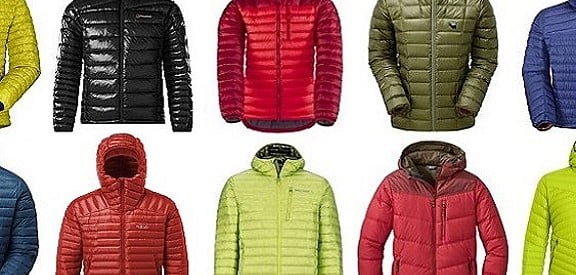
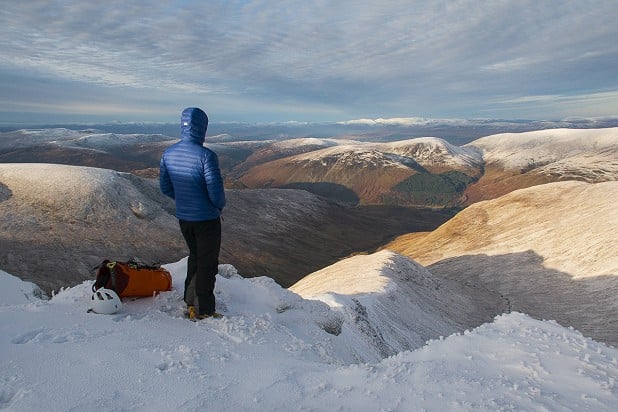
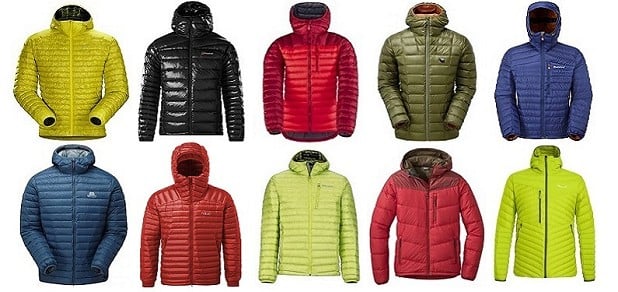
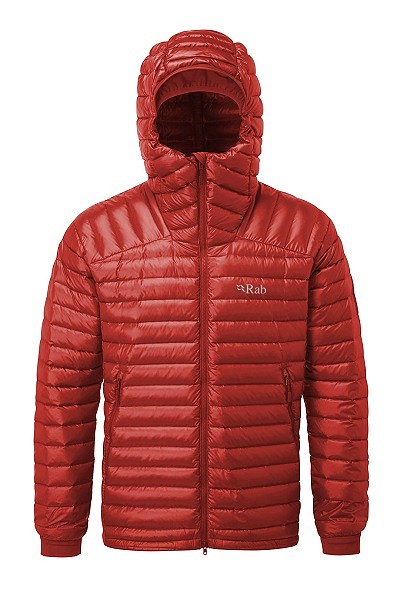

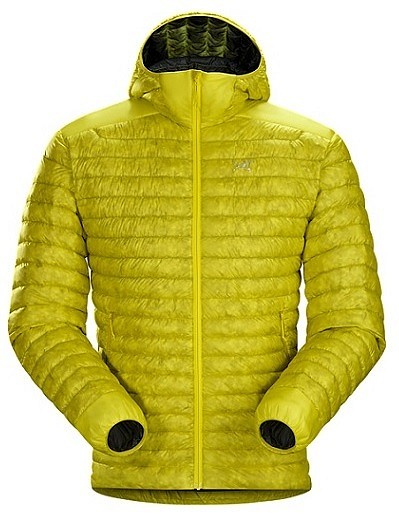


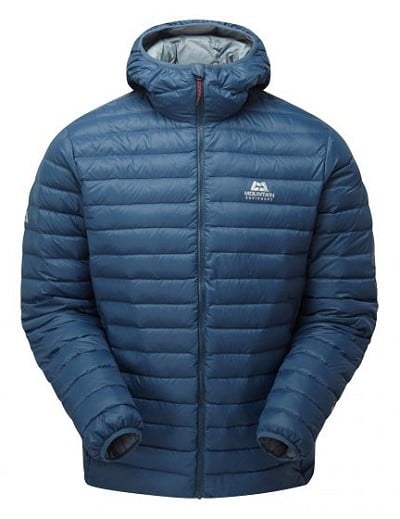
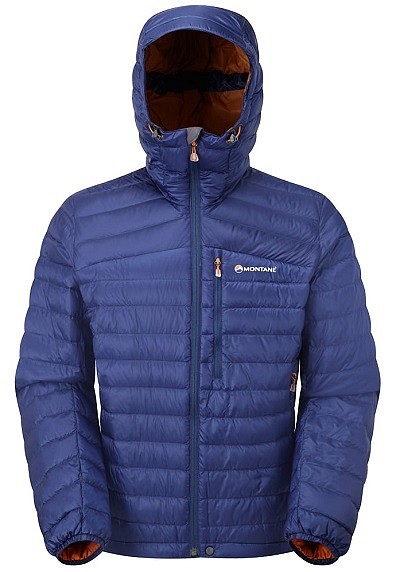

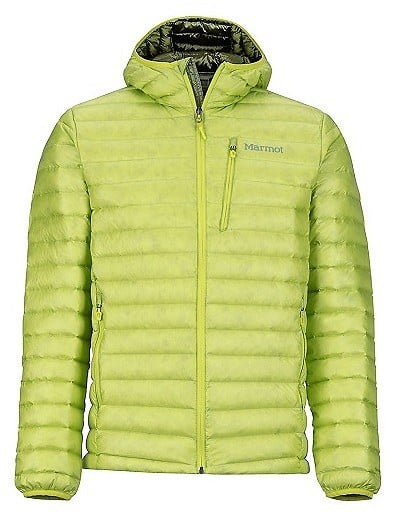
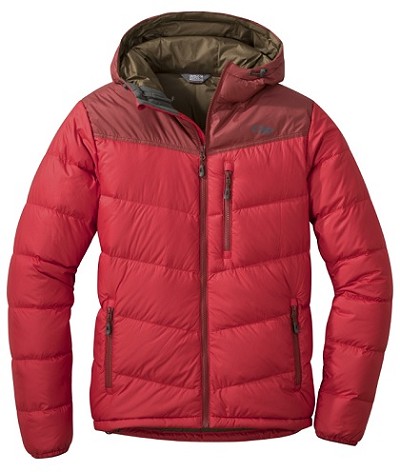
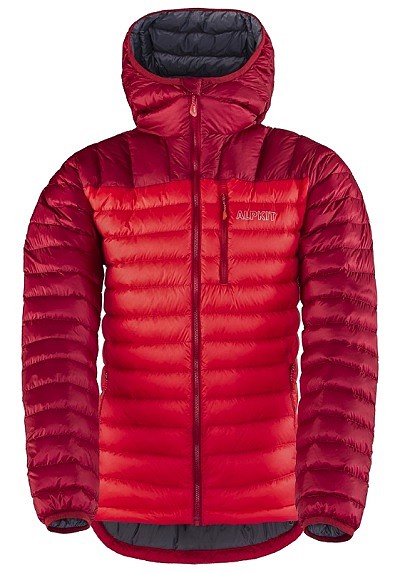

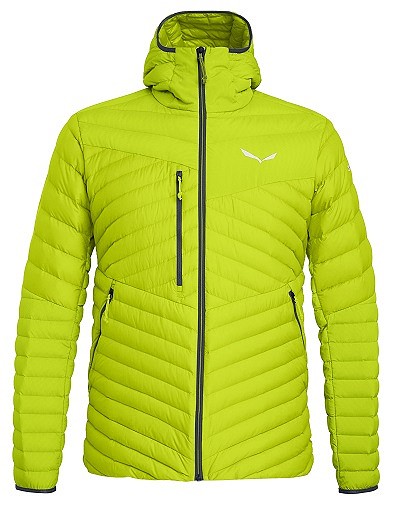
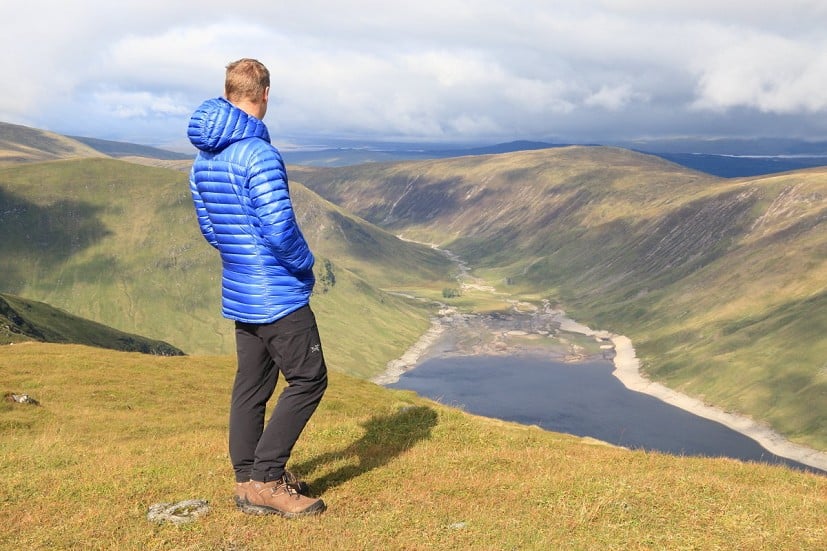

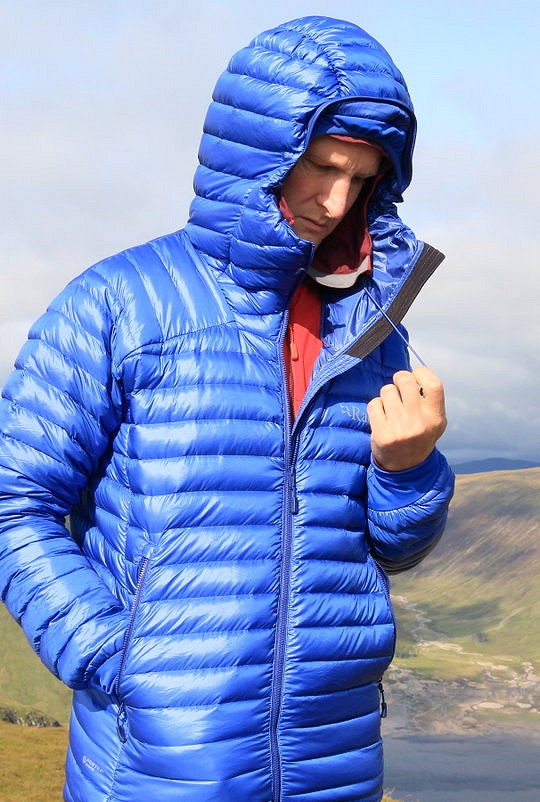
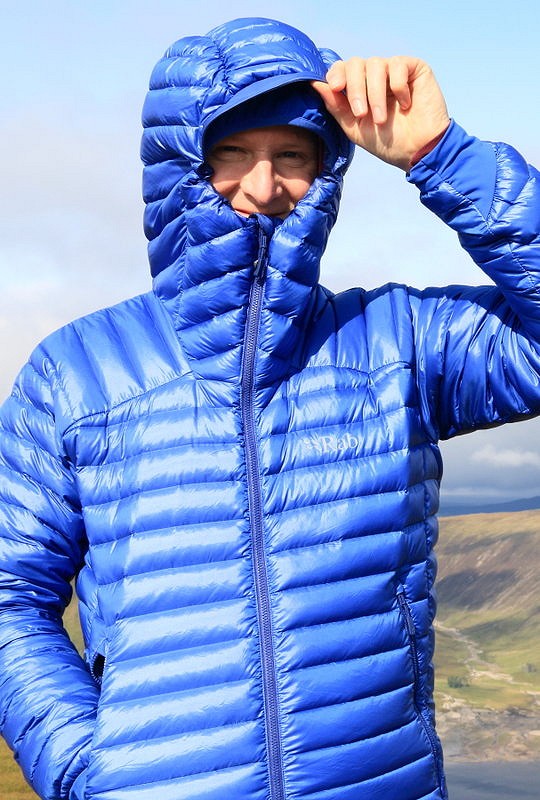







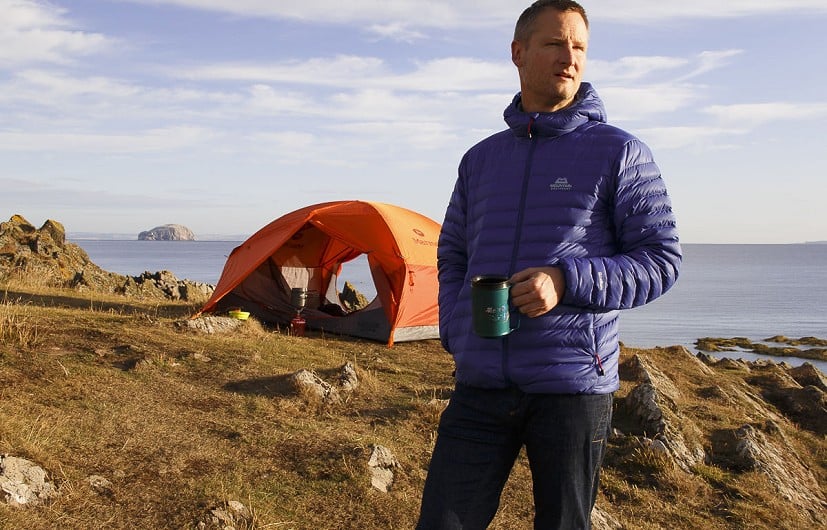
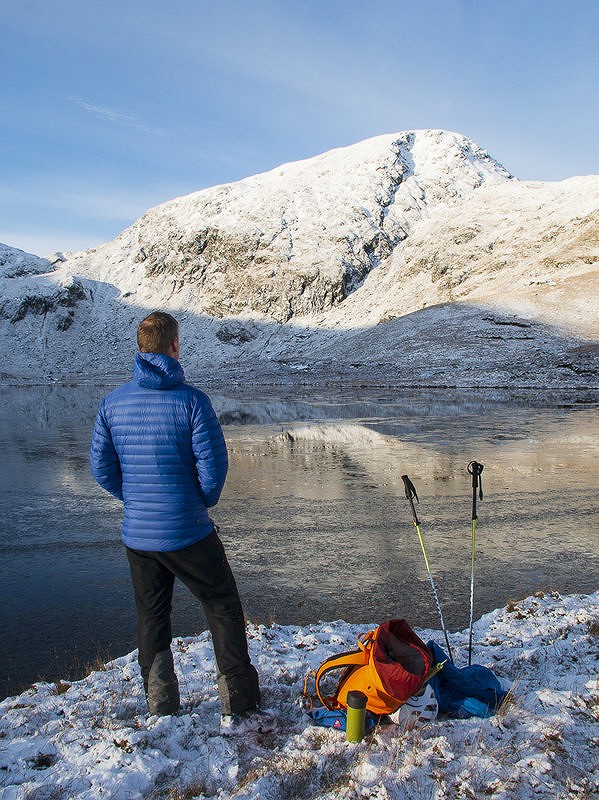
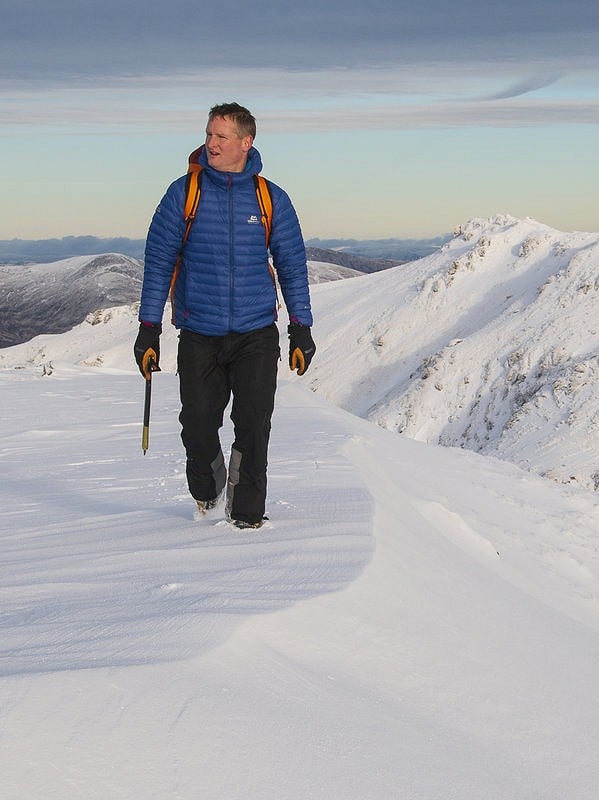
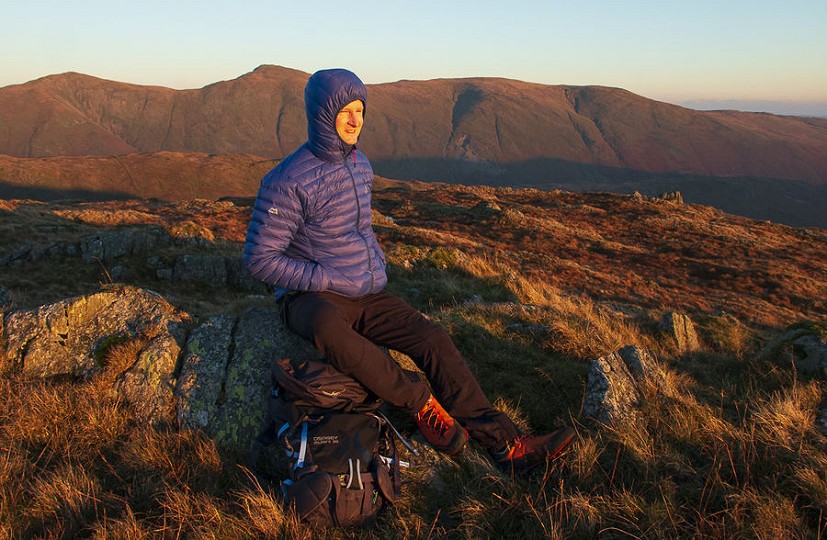
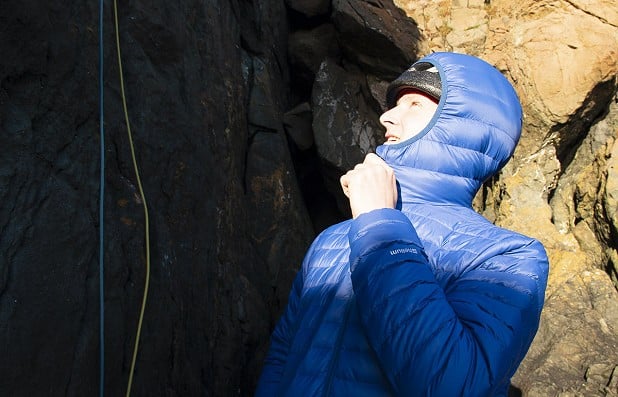
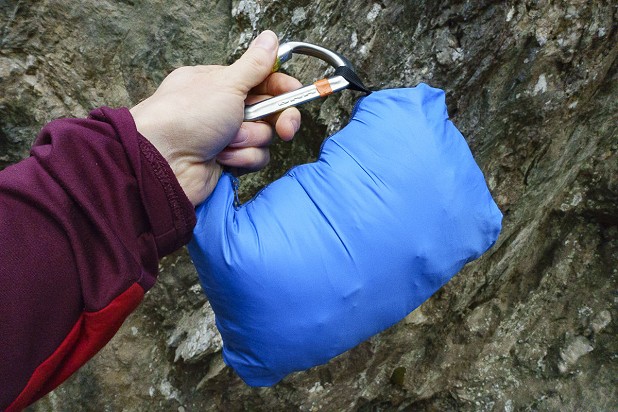


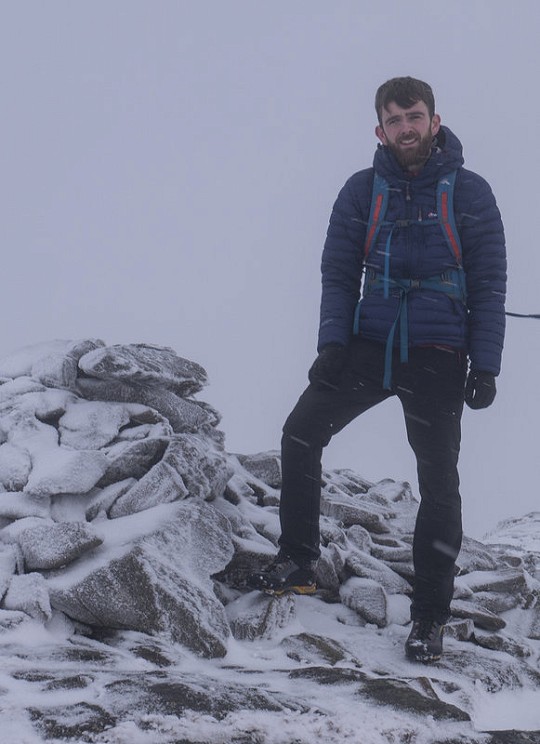
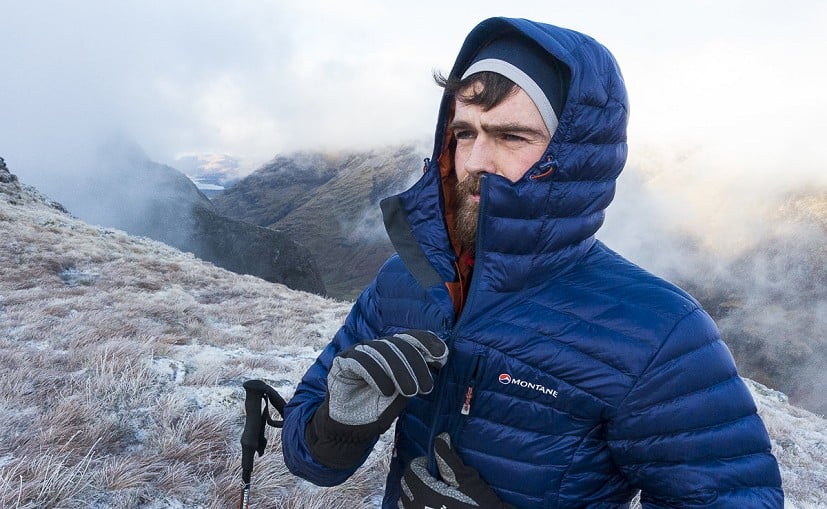
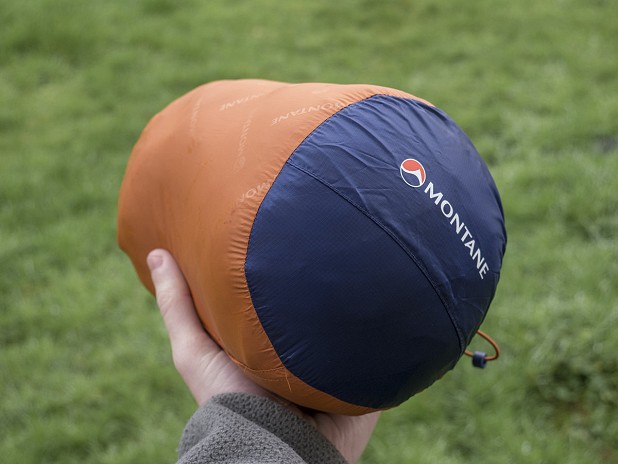
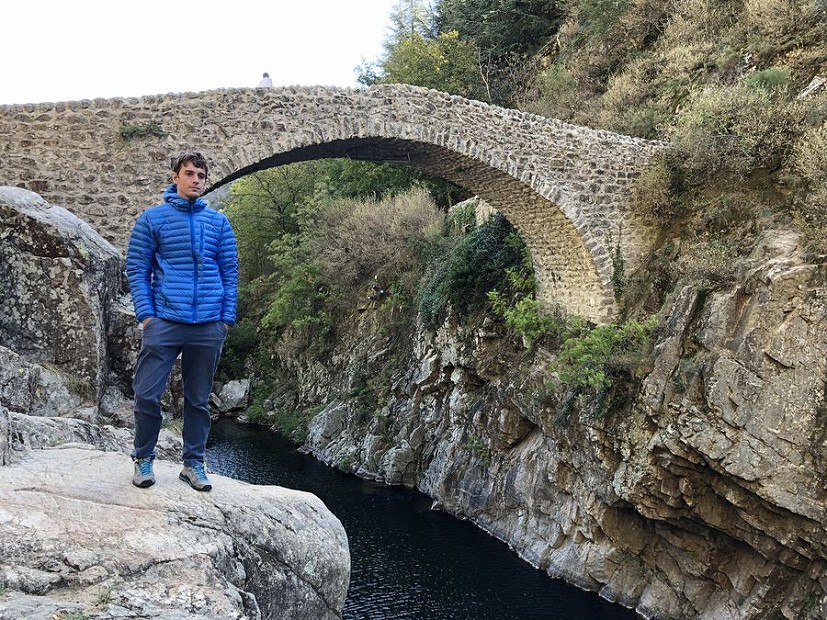

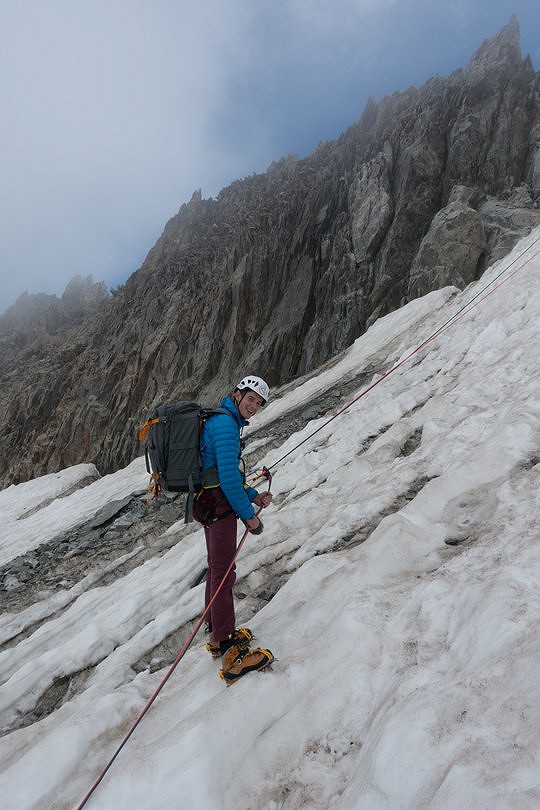
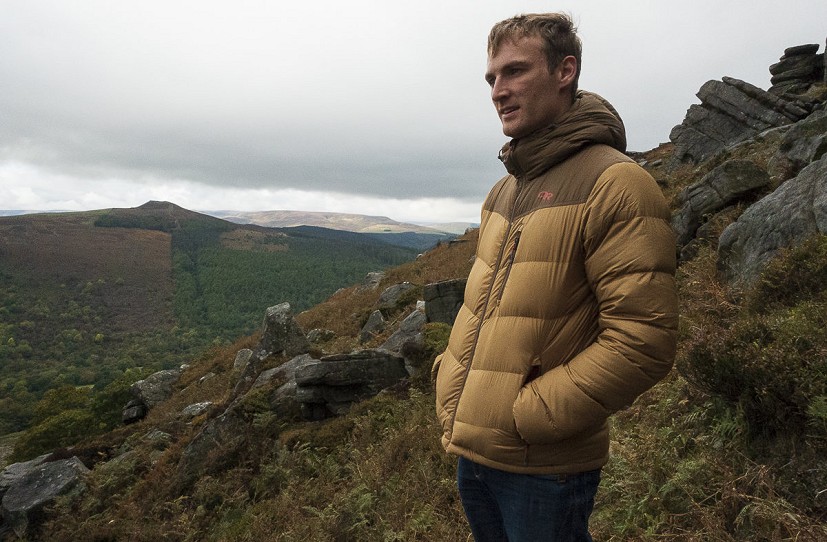

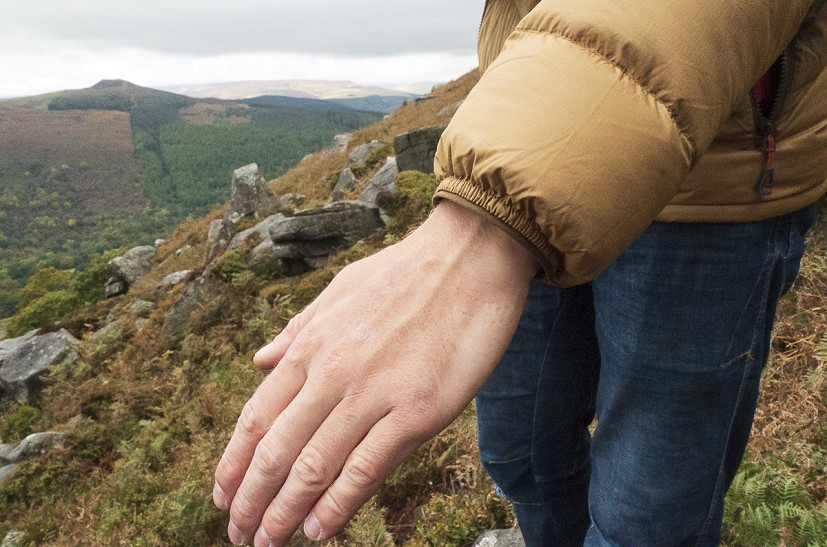
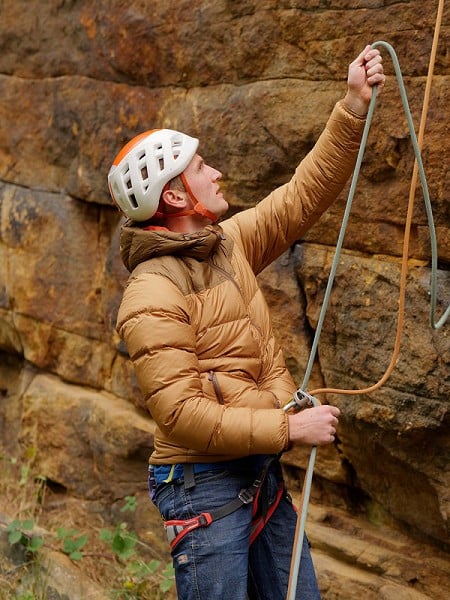
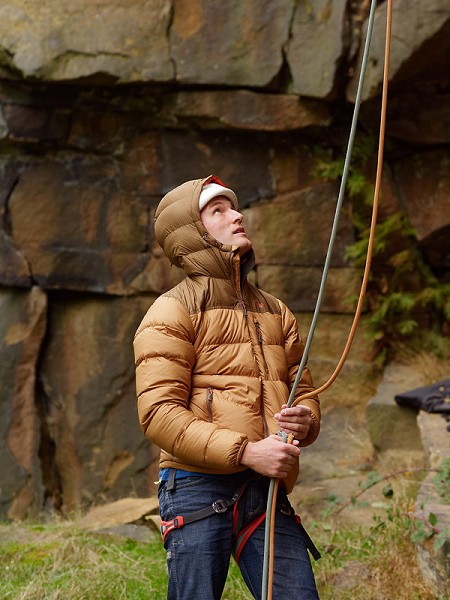
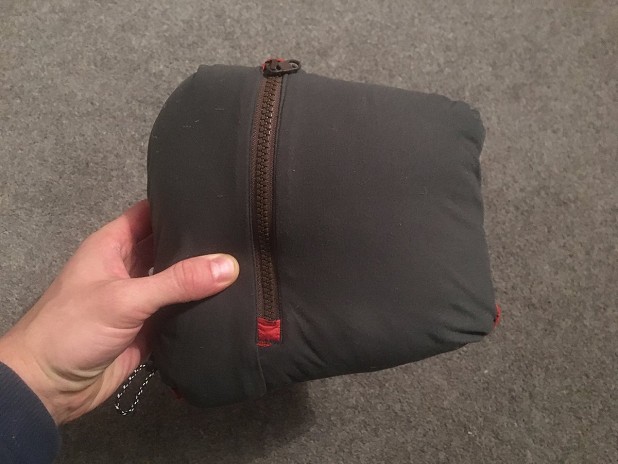
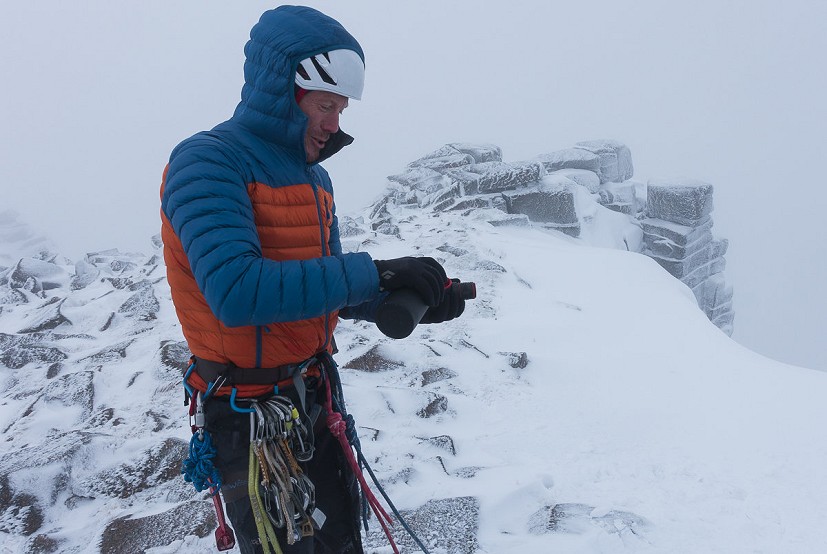
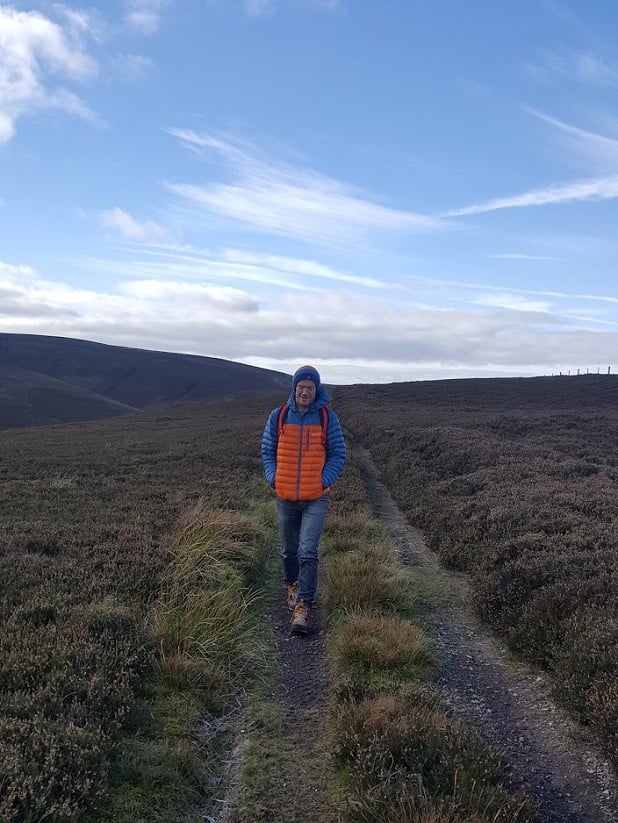
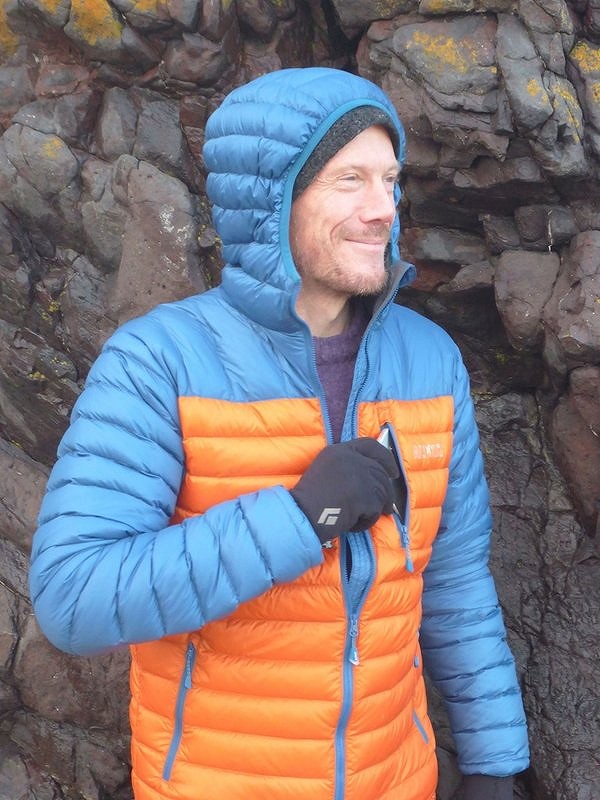
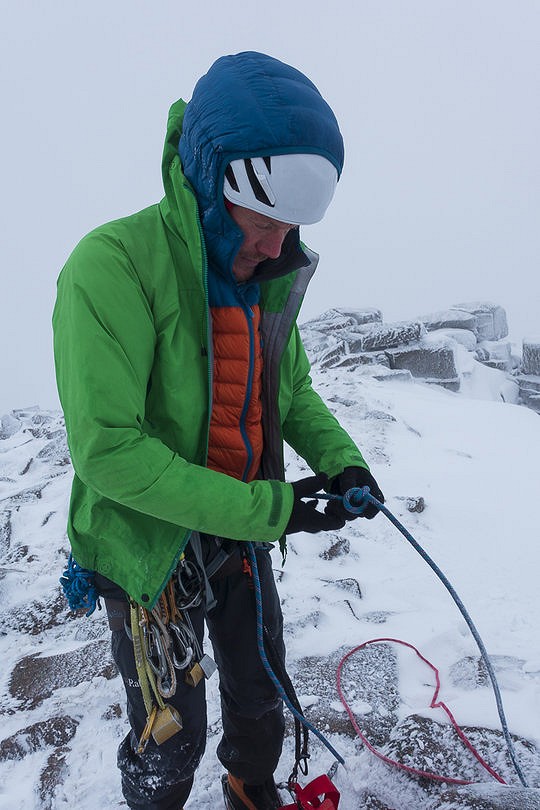
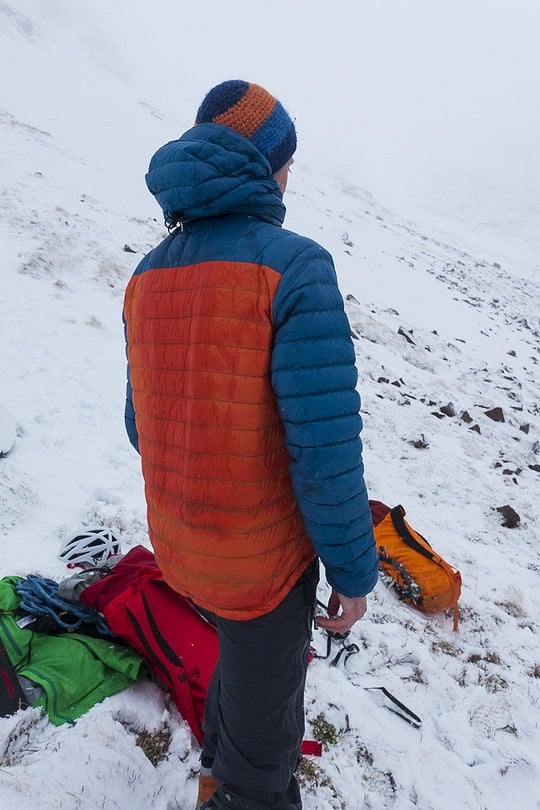

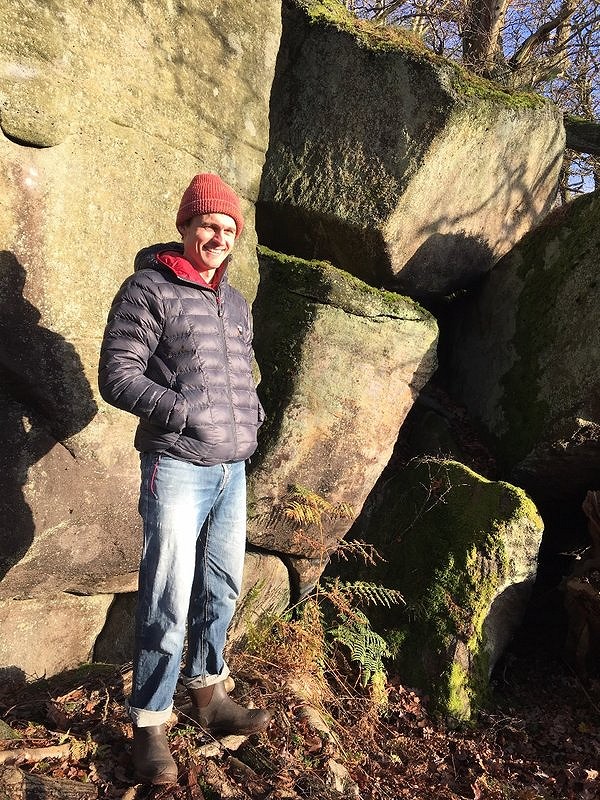
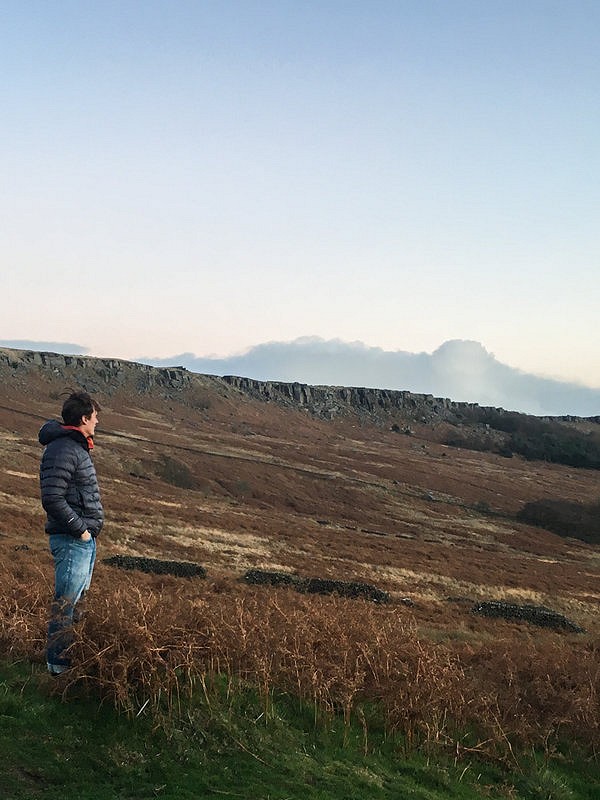

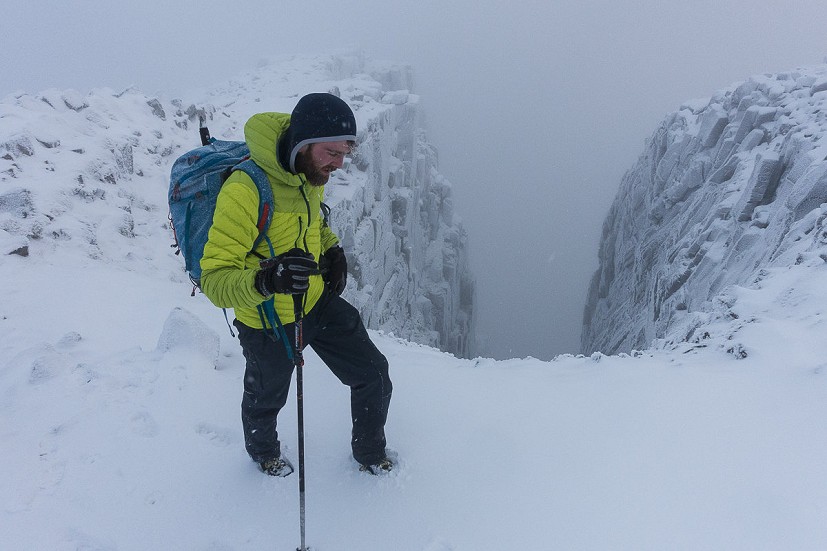
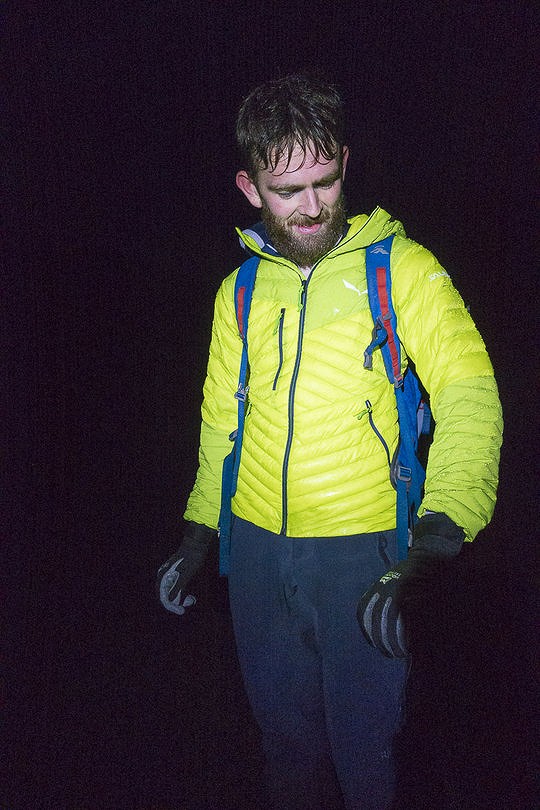

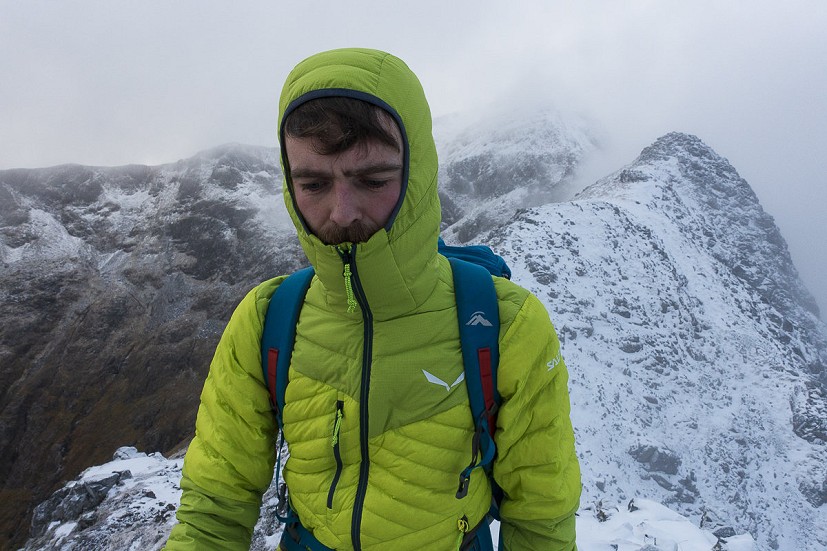
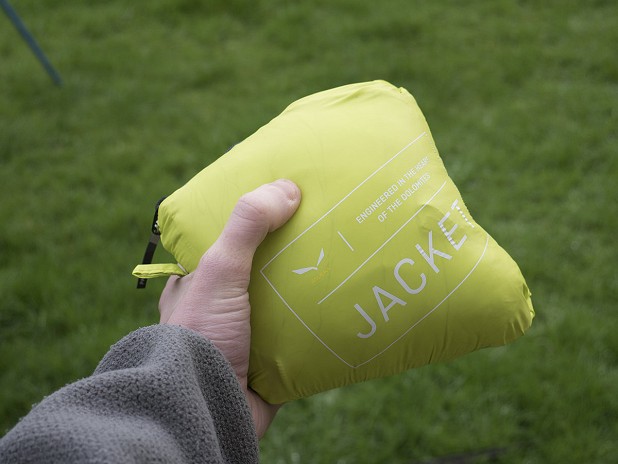

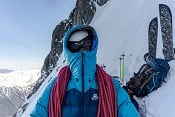


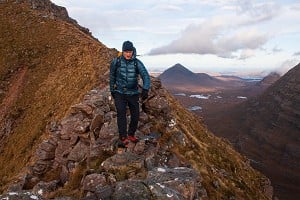




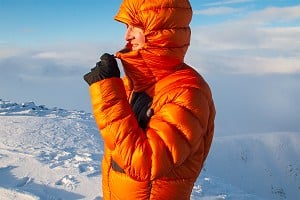


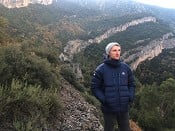
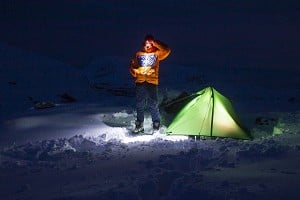
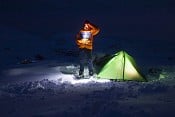
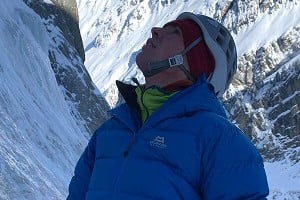
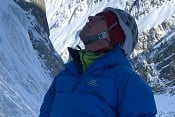


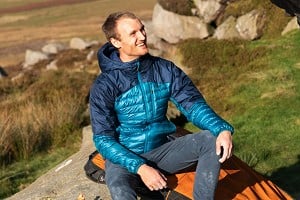



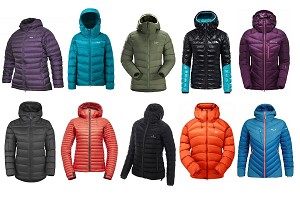
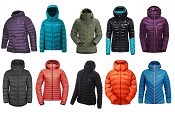
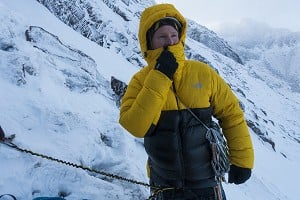
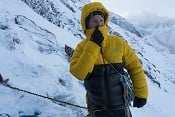
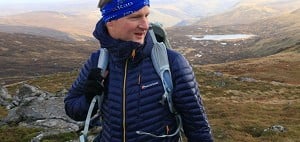

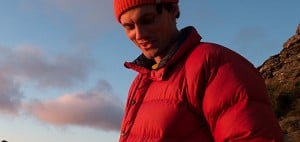



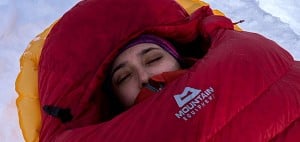



Comments
No Jottnar Fenrir? Ideal specification for this test.
One thing that's worth mentioning about the Arcteryx Cerium SL is it doesn't have a chest pocket. My beaten up old Rab Xenon which doesn't look nearly as good is far more practical for most things that I do. It's a shame because it is really well cut and looks great, if there was a pocket for my phone I'd use it a lot around town.
I know nothing about making jackets but is it really a problem to make one with a pocket that the jacket can stuff in? I have a rab down jacket that has the stuff sack which I'm obviously just going to lose. It fits in its own pocket so surely it's a case of having a slightly different zip. Or am I missing something?
They're changing their product line, although the Fenrir is still there but they've got other new products out to UKC for testing.
I don't think the jacket has changed much since https://www.ukclimbing.com/gear/clothing/down_insulation/jottnar_fenrir_down_jacket-6945 and mine is still going strong! Just washed it for the first time and it's fluffy, well - puffy, and clean again.
Or for £40
https://www.decathlon.co.uk/trek500-down-jacket-m-blu-id_8397298.html
Had mine about 3years, couple holes. I have posher jackets but this one lives in my rucksack